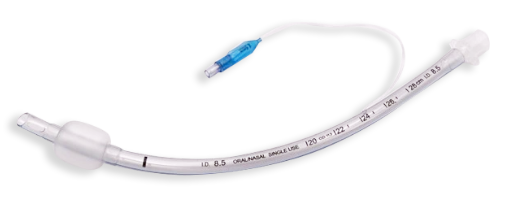Contact Us +
BEVER Medical develops and manufactures interventional devices that are used throughout many different medical device markets.
BEVER Medical owns a standard 100,000-level purification workshop covering an area of more than 2,000 square meters. It is equipped with advanced manufacturing equipments including the sophisticated plastic extrusion equipment and the advanced injection modeling machines.
Main product: Intermittent Catheters, Hydrophilic Catheters, Reinforced Endotracheal Tubes, Endotracheal Tube with Suction Lumen, Suction Catheters, Feeding Tubes, Nasopharyngeal Airways.
About Us +-
 0
0
Company Established
-
 0
0
Factory Area
-
 0
0
Company Staff
-
 0+
0+
Export Countries
-
The 4-day Arab International Medical Equipment Exhibition (Arab Health 2024) was concluded successfully on February 1, 2024, at Dubai World Trade Center. Arab Health is noted as the influential medical event in the Middle East and is also one of the largest, influential, and highly professional comprehensive medical device exhibitions worldwide. During the exhibition, over 4000 medical companies from over 70 countries and regions gathered in Dubai, showcasing innovative products and cutting-edge technologies in the industry. Bever Medical Devices Company was an active participant during the exhibition period, brought to the event a full range of innovative medical devices, and had an opportunity to conduct engaging exchanges and negotiations with companies and professionals from around the world. Our recently developed disposable medical devices exhibited at the occasion were nasopharyngeal airways made from various medical-grade materials and catheters featuring different designs. The PVC nasopharyngeal airway comes in flange design and trumpet design. The flange and trumpet-shaped parts serve the purpose of securing the placement of the airway preventing the airway from sliding down the nasal cavity. Both types of airways have beveled tips that ease insertion. Bever Medical Devices Company also boasts high-quality urinary catheters and suction catheters well received by customers from many different countries. These products are PVC intermittent catheters, hydrophilic catheters, PVC suction catheters, and catheters with elephant-foot tips, to name just a few.
-
Urinary catheters are medical devices used to drain urine from the bladder when patients are unable to do so naturally. They are commonly used in hospitals, clinics, and home care settings for patients suffering from conditions such as urinary incontinence, urinary retention, prostate disorders, spinal cord injuries, and other urological diseases. Urinary Catheter Market participants such as manufacturers, distributors, etc. have profound insights into this market. This news article is shared by one of the leading urinary catheter producers, Hangzhou BEVER Medical Device Co., Ltd., which provides information on global urinary catheter market growth. According to market research, the global urinary catheter market was valued at approximately $3.5 billion in 2022 and is expected to grow at a compound annual growth rate (CAGR) of around 5-7% over the next decade. By 2030, the market is projected to surpass $5 billion due to several key factors driving demand and innovation in the sector. A typical urinary catheter, picture provided by manufacturer Hangzhou BEVER Medical Device Co., Ltd. Factors Driving Global Urinary Catheter Market Growth 1) Aging Population The growing elderly population is one of the most significant factors driving demand for urinary catheters. With age, individuals become more prone to urinary incontinence, bladder dysfunction, and chronic conditions like prostate hypertrophy, all of which require catheterization. According to the United Nations, the global population aged 60 and older is expected to double by 2050, amplifying the demand for urinary catheters. 2) Rising Incidence of Urinary Disorders The increasing prevalence of conditions such as urinary incontinence, benign prostatic hyperplasia (BPH), and bladder dysfunction is boosting the demand for catheters. In particular, urinary incontinence, which affects millions worldwide, is a leading cause of catheter usage. The rise in chronic diseases such as diabetes and neurological disorders (e.g., multiple sclerosis) is also contributing to the need for urinary catheters. 3) Technological Advancements The development of antimicrobial and hydrophilic-coated catheters that reduce the risk of catheter-associated urinary tract infections (CAUTIs) is enhancing patient outcomes and fueling market growth. Moreover, advancements in catheter design, such as self-lubricating and silicone-based materials, are providing patients with more comfortable and durable options. Smart catheters equipped with sensors to monitor urine output and detect infections early are emerging, promising better patient monitoring and proactive care. 4) Increase in Surgical Procedures With the rise in the number of urological and gynecological surgeries, the demand for urinary catheters has grown significantly. Post-surgical patients often require catheterization for a short period, especially after prostate or bladder surgeries, contributing to the market expansion. Types of Urinary Catheters Driving Growth 1) Indwelling (Foley) Catheters These are the most common type of catheters used for long-term bladder drainage. Foley catheters, inserted through the urethra or suprapubic region, can remain in place for extended periods, making them suitable for patients with chronic conditions. 2) Intermittent Catheters Intermittent catheterization, used for short-term bladder drainage, is seeing increased adoption as it allows patients more freedom and independence. Advances in user-friendly, disposable intermittent catheters are also boosting their popularity. Regional Market Analysis North America dominates the global urinary catheter market, accounting for the largest market share due to its advanced healthcare infrastructure, high prevalence of urinary disorders, and growing geriatric population. Additionally, the region benefits from strong regulatory frameworks and high healthcare spending. Europe follows closely, with countries like Germany, France, and the UK leading the way in terms of adoption. An increasing number of surgeries and the availability of reimbursement policies are significant factors boosting market growth in the region. The Asia-Pacific region is expected to witness the fastest growth over the forecast period. The rise in healthcare investments, the expanding medical tourism industry, increasing patient awareness, and the growing geriatric population in countries like China, Japan, and India are driving the market. Additionally, improvements in healthcare infrastructure and government initiatives aimed at improving urological care are expected to enhance market expansion. Challenges Facing Global Urinary Catheter Market 1) Catheter-Associated Infections (CAUTIs) One of the primary risks associated with urinary catheters is the development of CAUTIs. These infections not only pose serious health risks to patients but also result in longer hospital stays and increased healthcare costs. Though technological advancements have reduced infection rates, CAUTIs remain a significant concern, driving demand for more infection-resistant materials and improved insertion techniques. 2) Cost Considerations High-quality and advanced catheters such as those with antimicrobial coatings can be more expensive, which may limit access in low-income regions. Additionally, the costs associated with managing catheter-related complications, such as infections, can be a burden on healthcare systems, especially in underdeveloped areas. 3) Regulatory Challenges The stringent regulatory approval processes in major markets like the U.S. and Europe can slow down the introduction of new products. Companies must meet rigorous safety and efficacy standards, which can delay product launches and increase development costs
-
The nasopharyngeal airway market is undergoing steady growth due to its increasing adoption in emergency and surgical settings where maintaining a clear airway is critical. The following factors further illustrate the market's development trajectory: Expanded Drivers of Growth: Rising Respiratory Disorders: The growing prevalence of conditions like obstructive sleep apnea, chronic obstructive pulmonary disease (COPD), and acute respiratory distress drives the demand for nasopharyngeal airways as an essential non-invasive intervention. Elderly Population Growth: Aging populations are more susceptible to airway obstructions due to weakened respiratory function. This demographic shift is significantly expanding the need for airway management solutions. Emerging Economies' Investments: Increased healthcare funding in developing regions, particularly in Asia-Pacific and Latin America, is enhancing access to advanced airway management devices. This trend supports higher adoption rates and boosts market expansion. Innovation and R&D: Manufacturers are developing hypoallergenic and biocompatible materials, size-specific products, and user-friendly designs to improve patient comfort and outcomes. These advancements are also addressing concerns like nasal trauma and infections associated with nasopharyngeal airway usage. Awareness and Training: Educational initiatives for healthcare professionals on the effective use of nasopharyngeal airways are increasing their application in both emergency and elective procedures. Future Outlook and Opportunities: Technological Advancements: New designs that ensure better fit and safety for both adult and pediatric patients are likely to drive market innovation. Healthcare Expansion in APAC: Countries like China and India are experiencing significant growth in healthcare infrastructure, creating opportunities for nasopharyngeal airway manufacturers to penetrate these untapped markets. Sustainability Trends: A focus on eco-friendly and reusable airway devices could align with global healthcare sustainability goals. Challenges: Despite growth opportunities, challenges such as competition from alternative airway devices, stringent regulatory standards, and risks like nasal trauma remain concerns for market players. In conclusion, the nasopharyngeal airway market is poised for robust growth, with a strong emphasis on innovation, regional expansion, and tailored solutions for diverse patient needs. This positions it as a critical segment in global airway management solutions.
Interested in our products? Fill out the form and we’ll reply within one business day.
















